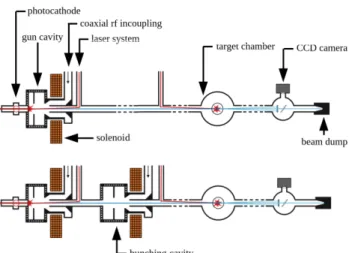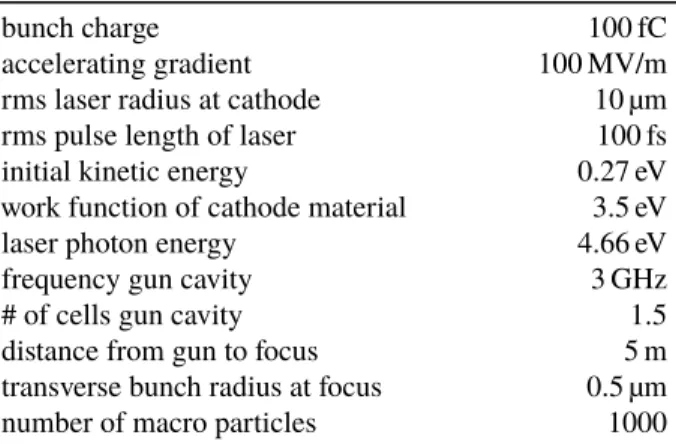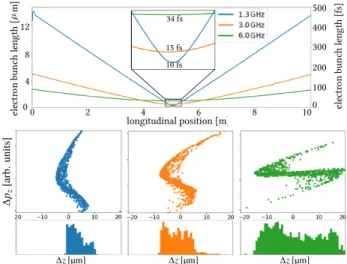FIRST CONCEPTUAL DESIGN STUDIES OF AN ELECTRON SOURCE FOR ULTRAFAST ELECTRON DIFFRACTION AT DELTA ∗
D. Krieg † , S. Khan, Center for Synchrotron Radiation, TU Dortmund University, Dortmund, Germany K. Sokolowski-Tinten, University Duisburg-Essen, Duisburg, Germany
Abstract
Ultrafast electron diffraction (UED) is a technique to study the structural dynamics of matter, combining diffraction of electrons with sub-angstrom De-Broglie wavelength with femtosecond time resolution. The method is complementary to X-ray scattering at free-electron lasers. UED pump-probe experiments require ultrashort laser pulses to pump a sample, electron bunches with small emittance and ultrashort length to analyze the state of the sample by diffraction, as well as excellent control of the delay between them. While most UED systems are based on electrostatic electron sources in the keV regime, electrons accelerated to a few MeV in a ra- diofrequency photocathode gun offer significant advantages regarding emittance and bunch length due to the reduction of space charge effects. Furthermore, the longer mean free path of MeV electrons allows for thicker samples and hence a broader range of possible materials. In this paper, a first conceptual design and simulation results for a university- based UED facility with ultrashort and low-emittance MeV electron bunches are presented.
INTRODUCTION
Ultrafast electron diffraction (UED) is a technique to ex- plore structural dynamics of matter e.g. as a pump-probe with an optical pump and an electron bunch as probe. The technique has to satisfy the relevant spatial (sub-1 Å) and temporal (sub-100 fs) resolution. The scattering cross sec- tion for electrons is 10 4 to 10 6 times higher than for X-rays so that a small number of electrons is sufficient to achieve results comparable to X-ray scattering [1]. However, a very high electron beam quality is required. The study of, e.g., proteins requires a coherence length of 30 nm, which trans- lates into a beam divergence of 12.5 µrad at a bunch radius of 0.2 mm [2]. Moreover, short and reproducible bunch lengths down to some tens of fs are required. In most cases, UED is performed using keV DC electron sources. They have been improved over years and produced scientific results. The usage of MeV electrons, i.e., by employing radiofrequency (rf) photoinjectors has several advantages [1].
1. The higher acceleration gradient allows to rapidly ac- celerate the electrons to relativistic energies. This sup- presses space charge effects, because both, the trans- verse and the longitudinal space charge force acting on a particle in the bunch, scale as 1/γ 2 with the Lorentz factor γ [3]. The generation of brighter electron beams with shorter bunch length is possible.
∗
Work supported by MERCUR Pr-2017-0002
†


